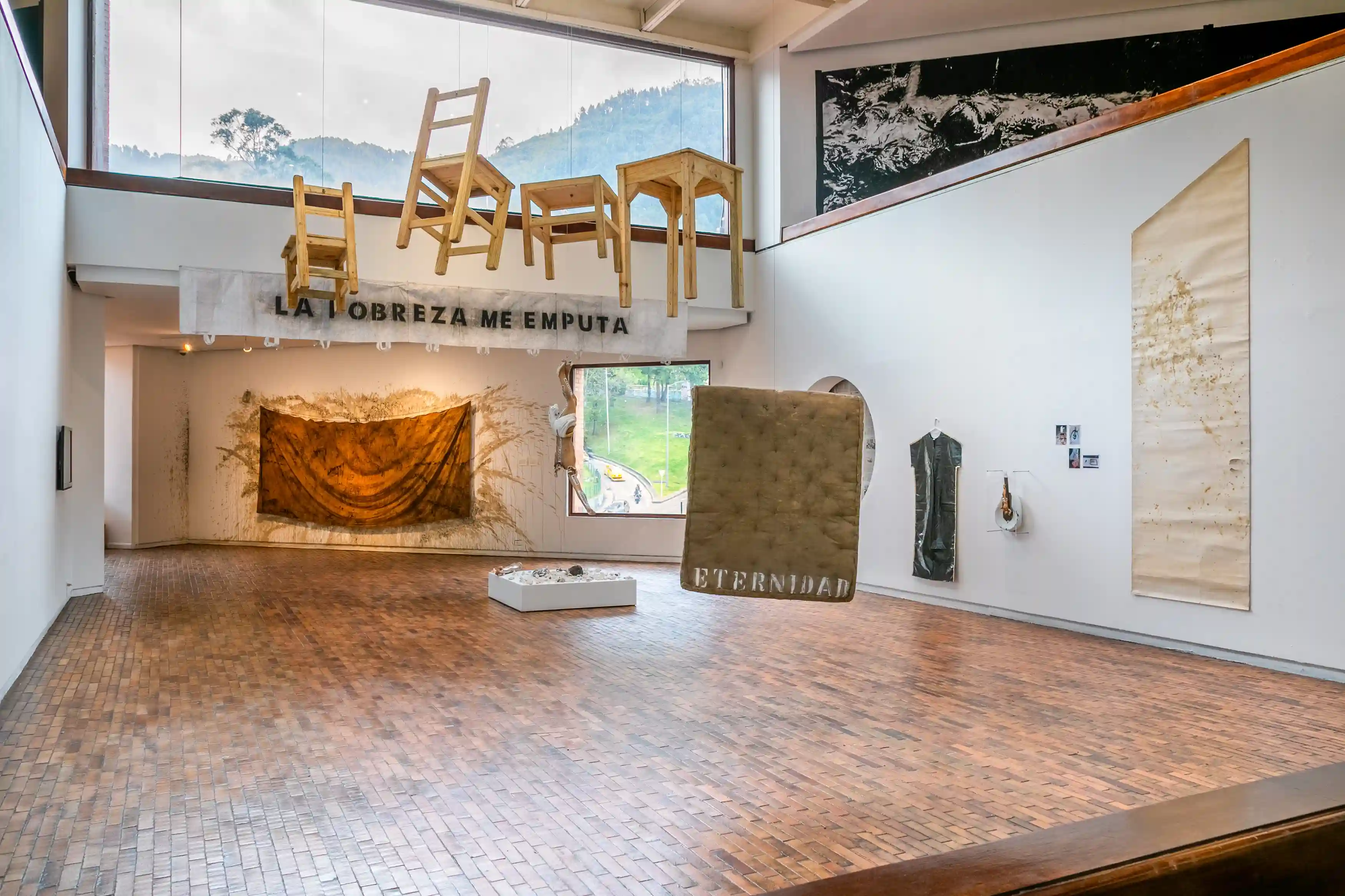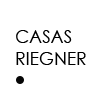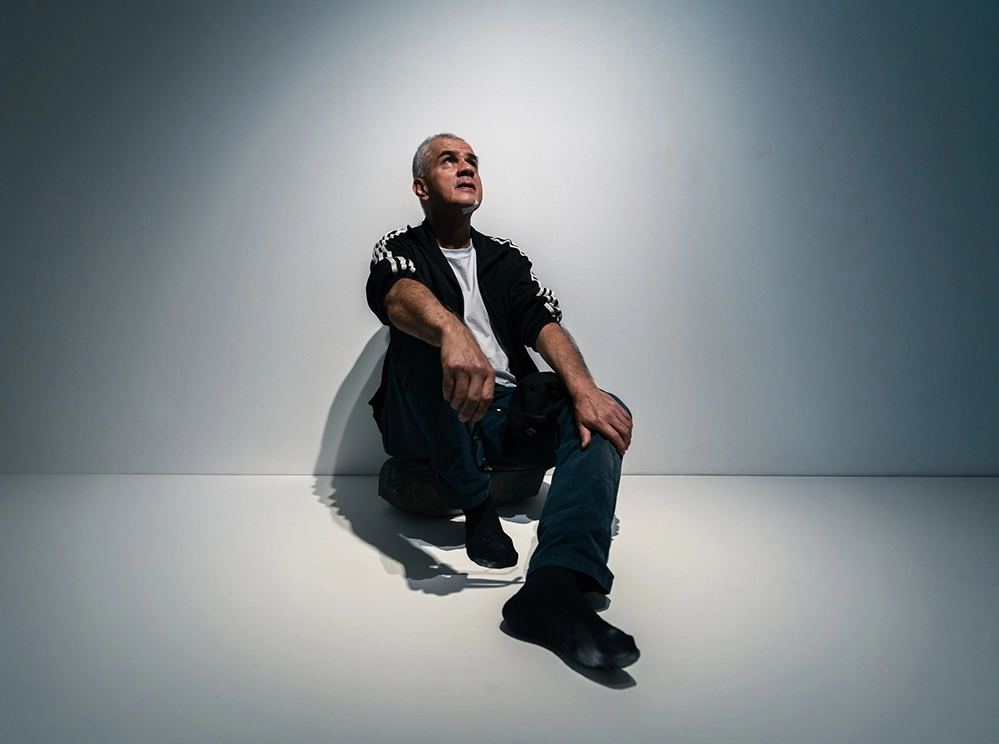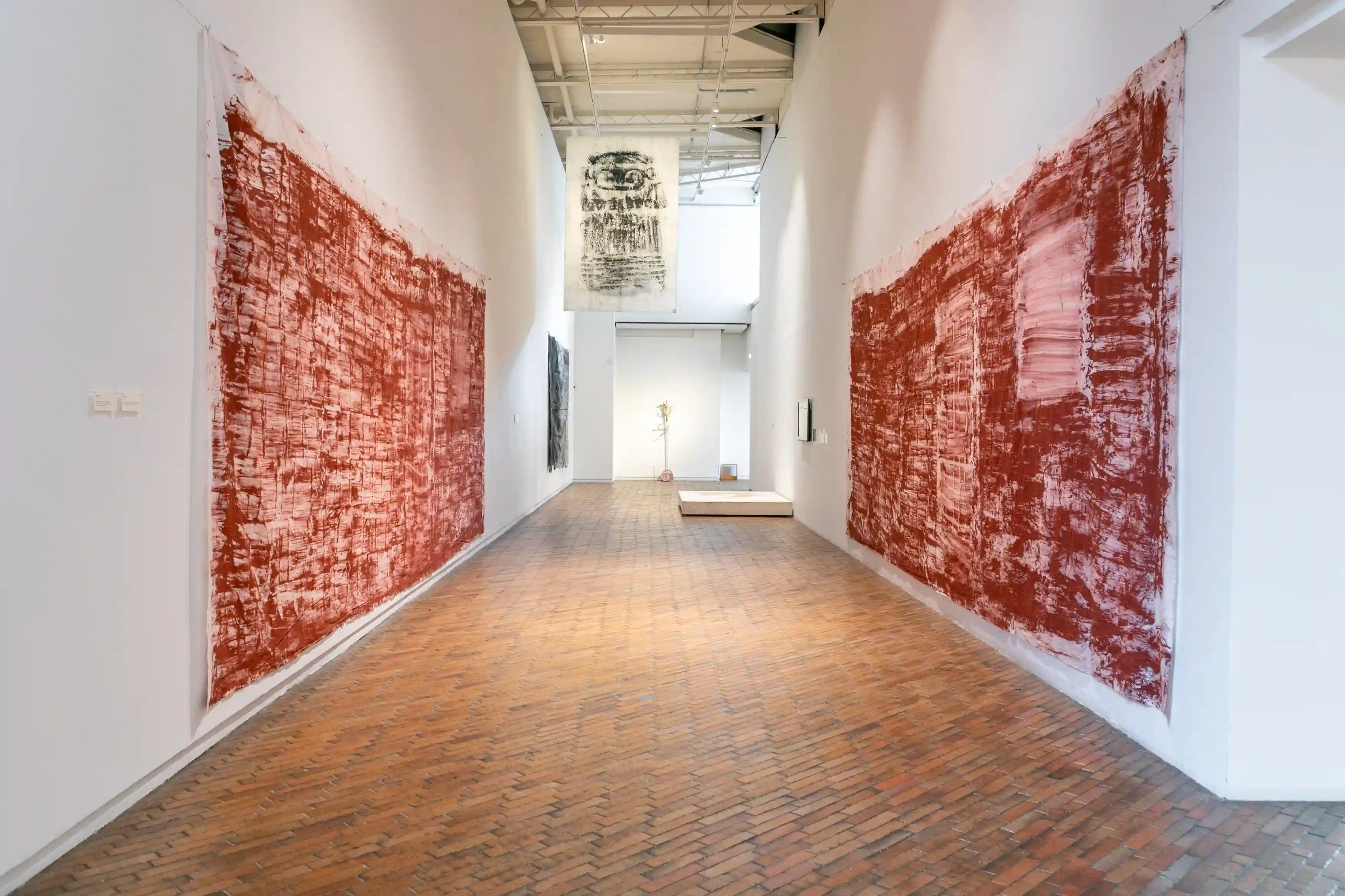Rosemberg Sandoval at Museo de Arte Moderno de Bogotá (MAMBO)
Courtesy: Museo de Arte Moderno de Bogotá
Rosemberg Sandoval: Performer (1980-2023)
Rosemberg Sandoval is one of the most controversial and transgressive artists in the Colombian art scene. Over more than 40 years, Sandoval has developed a radical body of works that shatter the artificial division between the aseptic art gallery space and a crude Colombian reality that is marked by poverty, guerrilla warfare, drug trafficking, and common crime. His work encompasses installations, interventions, sculptures, paintings, drawings, and performances that make use of daily-life materials obtained from circumstances of marginality and violence, including human remains.
The title of the exhibition, Performer, references the homonymous book by the avant-garde Polish theater director Jerzy Grotowski (1933–1999), one of the main contributors to contemporary performance, to emphasize the references tied to Sandoval's performative practice, which is unique in the Colombian panorama, and influential in the Latin American scenario.
Rosemberg's work reacts to the sociopolitical context in which he was born and raised, incorporating strategies connected to the 70s performance: the rituality of the Austrian Wiener Aktionismus or French Gina Pane; the daily tasks of Vito Acconci, as well as elements from the Colombian Nadaistas and International Situationism.
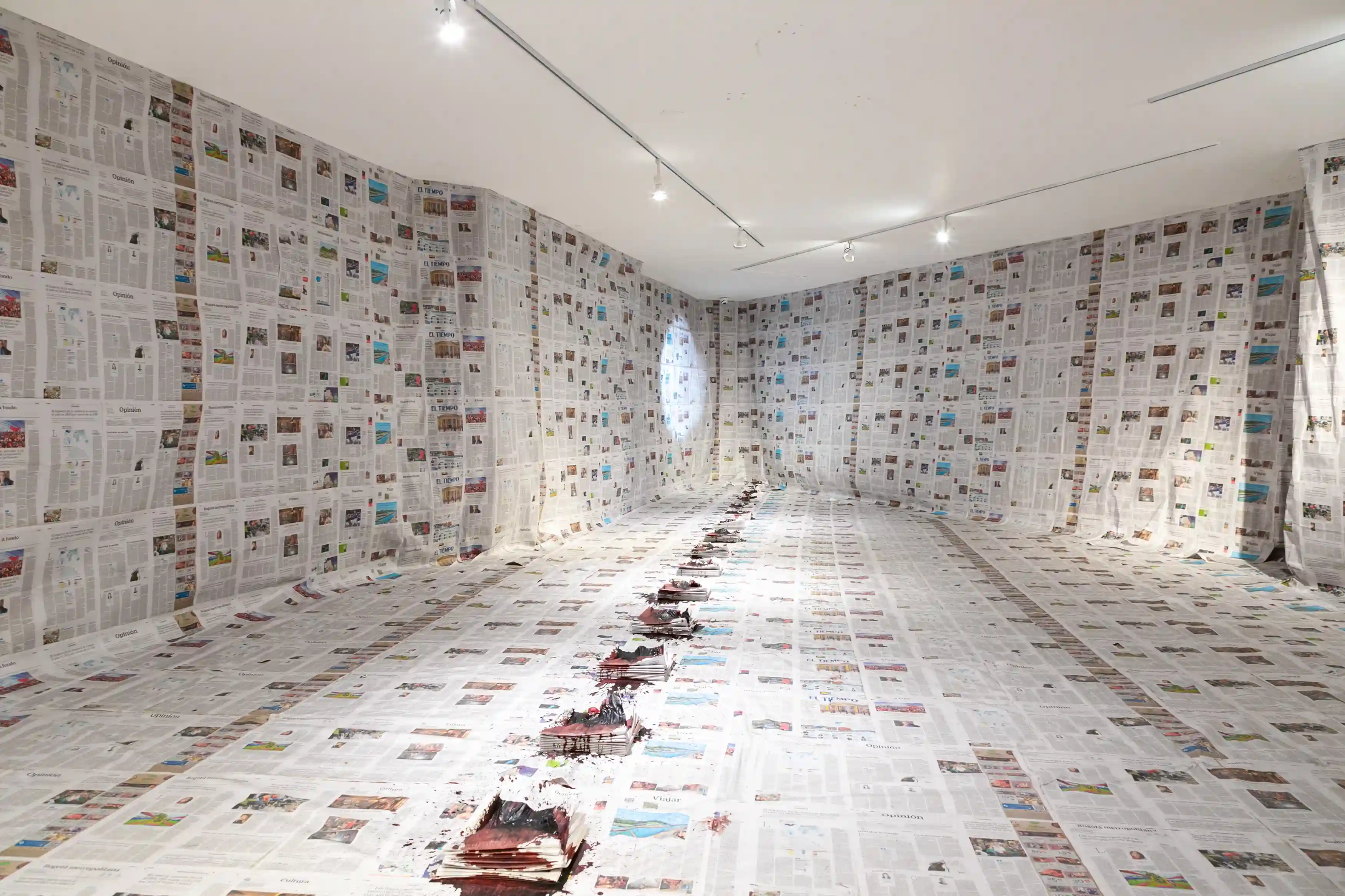
Courtesy: Museo de Arte Moderno de Bogotá
The exhibition spans a variety of media: video, photo, sculpture, installation, and performance while displaying a broad selection of Sandoval's early and recent pieces, in which the artist uses human hair, bodily dirt, blood, or debris collected after a terrorist attack. In 12 de marzo de 1982 - 29 de junio de 2023, Sandoval covers a gallery with blood-soaked newspapers to denounce the political climate of the time, a piece that he will once again stage for the exhibition. In Rose-Rose (2001-2023), presented as the relict of an action in which Sandoval holds a large bouquet of red roses chopped with his bare hands. Wounded by the thorns, he drips blood onto his white dress and floor, where the bloodstains merge with broken petals. In Mugre (1999), he uses the body dirt of a homeless person as pigment on the museum’s white walls.
Performer denounces the ethical implications of social and cultural injustices imposed by political and economic systems. Through his uncomfortable and radical work, Sandoval creates spaces where the aesthetic, the anti-aesthetic, and the marginalized can be seen and heard.
